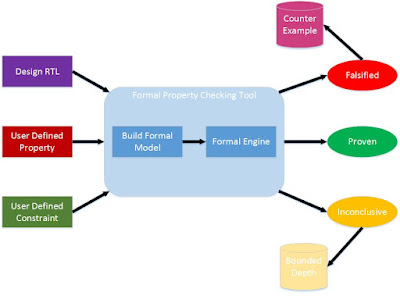Verilog Event Regions

Hi All, Today we'll see about something important about Verilog language. We'll see the event regions of the Verilog and how does it affect the simulation process. Verilog Event Regions Please note that this is a conceptual model as per IEEE standard and how each vendor implemets this model, is completely proprietary. Verilog is divided in the 4 event regions. And for any given time stamp, it is necessary to execute events of all region, before moving to the next time stamp (So if timescale is 1ns/10ps, then at every 10ps, events in all of the regions are evaluated, before moving to next simulation time) Active Region - The active event region is the event region, where most of the Verilog events are scheduled including Blocking Assignment, Evaluation of RHS side of Nonblocking Assignments, Continuous Assignments, $display command execution and evaluation of i/p & o/p of primitives. However all of the sub events of the active region, can be executed in

